
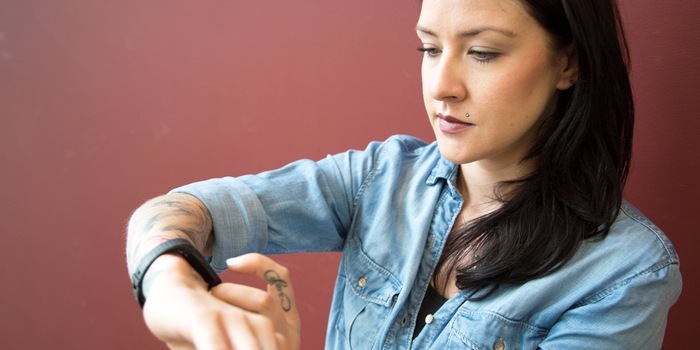
Fitbit in the long-term test: Which model passes the endurance test?
Six months. Three trackers. Customer Service Representative Melanie Lee took on three Fitbit brand trackers for a long-term test. She tried to find an exact step count and was amazed at her sleep.
"I wonder how many steps I take a day," says Melanie Lee, Customer Service Representative at the digitec store in Zurich. Her job is to pick up your order from the warehouse and make you happy with your new computer parts or your hoover or your new washing machine. The German with the tattooed arm estimates that she covers a few kilometres.
"Good question," I say, "let's find out."
Two days later, Melanie straps a black Fitbit Flex 2 around her arm. That was just before Christmas 2016.
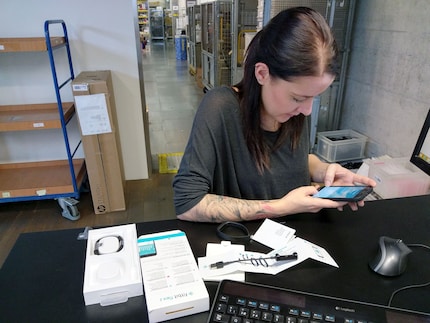
What none of us realised was that the idea of counting steps would become a series of tests over the course of six months. Melanie really got stuck into the test, thought about it and scrutinised the device and its mechanisms. She found the reason for this in a chance encounter.
"I think there's something wrong," she says.
The problem: the Flex 2, the only fully waterproof device in her test series, counts the same number of steps on days when she goes for a relaxed and not too long walk as it does in the middle of the Christmas rush in the shop, where she actually just dashes to the warehouse and back again.
"I'll strap this round my foot now. Let's see what happens," she announces and gets to work.
The start with the Fitbit Flex 2
After the initial setup and the foot thing, Melanie goes quiet. Sure, I bump into her in the shop from time to time, but the conversation rarely turns to the inconspicuous device on her arm or foot.

"The app causes problems," is her first conclusion. The figures are sometimes incorrect, synchronisation doesn't always work and "at some point I lost four days of data for reasons I can't quite fathom". So why is she only realising this now? Because she only has to top up the Flex for a few hours every four days. With 24 hours of monitoring, that's a highly respectable achievement.
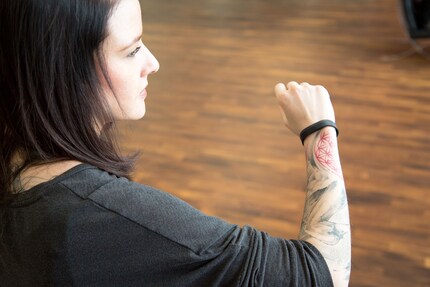
But there is one thing that concerns the young woman: "Why do I have to disclose my geolocation at every turn?" Because the app refuses to display any data as long as the GPS function of the smartphone connected to the Flex is switched off. She wonders whether it is necessary to disclose her exact location if the device itself can count steps via a gyro sensor? This feature is still mandatory for all Fitbits. No data analysis without GPS.
The criminal look with the Charge 2
After the Flex, Melanie strapped the Charge 2 in the Gunmetal (black-grey) colour onto her wrist in spring. She quickly realised: "This device is much better than the Flex". There are many reasons for this.
- The Charge has a display and shows the battery and time
- Thanks to the display, other features such as a stopwatch are also built in
- The Charge measures your heart rate
- She likes the design much better
- The battery lasts for more than a week
But Melanie is not satisfied with the technological features alone. She notices how her life is changing. She is particularly concerned about one topic in particular: sleep.
Fitbits not only measure the number of steps, but also the phases of sleep. "At first I thought it was just a gimmick, but it has a clear effect," says Melanie. Even when she was flexing, she noticed that she tended to go to bed earlier, only to receive the virtual medal for being a good sleeper the next morning. "I'm actually a night owl. I very rarely go to bed before midnight," admits Melanie. But with the tracker, she has made an effort to sleep more. As with the steps, for which users receive an achievement if they achieve a certain target number of steps per day, sleepers are also rewarded if they get enough sleep.
"I find it totally exciting that I suddenly have something that watches me sleep and isn't a stalker," she says exaggeratedly seriously. The Fitbit measures how much she moves during the night, how deeply she sleeps, how often she wakes up and how long it takes for her to fall asleep again. Restless nights with sleep until midday usually happen at the weekend. During the week, you can tell quite accurately when Melanie goes to work and when she doesn't.
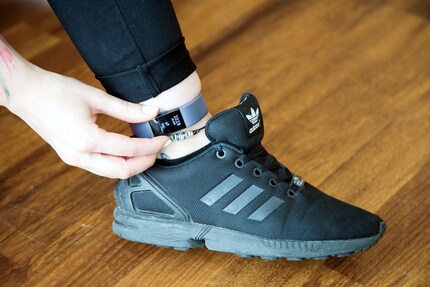
Speaking of steps: Once again, the device moves from the wrist to the heel. The test shows the same result as with the Flex. The number of steps on the foot is massively higher than on the wrist. Melanie has to laugh when she describes the test with the ankle: "With this thing on my foot, I almost look like I'm wearing one of those house-arrest ankle cuffs."
.
At the cutting edge of technology with the Alta HR
The first series of tests had been going on for five months when Melanie took delivery of the third device. The trackers have long since become part of the 26-year-old's everyday life. She advises customers on buying Fitbits and speaks from experience and with many anecdotes. Her decision has been made: She wants to continue testing devices.
All right, but first her opinion on the Alta HR, the latest device on her wrist and ankle. "It's a good mix of the Charge and the Flex," she says. Although she likes the features and additional functions of the device, there's one thing she's not happy with: "I really don't understand why the clasp has to be so cumbersome."
She tries to quickly strap the Alta HR onto her wrist. Without success. "Man! If they had used the Flex fastener, it would be perfect!" The other thing that bothers her is that the Alta HR is not waterproof. Splash-proof and sweat-proof, yes, but she hasn't dared to wear it in the shower. So before every shower, she has to take the tracker off and then put it back on again. This is slightly tedious, but purely a matter of habit. Although the Alta HR is water-resistant, this does not mean that it is absolutely waterproof. Even if it can withstand a shower: Melanie doesn't want to risk damaging the Fitbit.
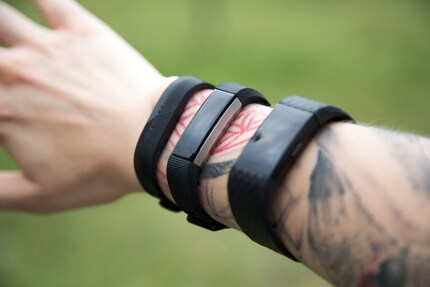
However, she has nothing but good words for the Fitbit user community. "No matter what problem or question I had about one of the three trackers, the Community helped me quickly and in a friendly manner."
Another gamification aspect comes into the woman's life. This time it's the Alta HR's heart rate monitor, which leads to virtual rewards. But the gadget can also help in an emergency. "I'm not an expert or a doctor," she says, "but I can well imagine that the device could help with the early detection of panic attacks."
How far does Melanie go?
Analysing the data from Melanie's trackers shows: Working in one of the digitec shops is worthwhile for endurance athletes. One example: between 20 February and 26 February, Melanie walked 124,170 steps according to the analysis. That's an average of 17,739 steps per day. This corresponds to a total distance of 83.11 kilometres or 11.8 kilometres per day. On the record day during this period, she took 24,493 steps and thus covered 16.42 kilometres.
However, the question of accurate measurement is still on her mind. That's why she strapped all the parts not only around her wrist but also around her ankle. "Putting them on was sometimes elegant, but often not," says Melanie, laughing out loud. The look also ranges from "slightly thicker anklets" to "ankle cuffs for convicts", if Melanie's sense of fashion is to be believed. After a brief digression about the look of anklets, complete with wild gesticulation around one ankle, the long-distance walker brings us back to the topic.
"Yes, it makes a difference whether I wear the tracker on my arm or on my foot," she says. This is because Fitbits count fewer steps on the arm than they do on the foot. And this is consistent across models and app updates. This is where one of the great advantages of long-term testing comes into play: Melanie has been able to take her time. She was able to try things out, formulate hypotheses, test them and discard them.
Her explanation: "When I carry a product from behind the counter, my hands are stable because I'm carrying something". It's like in the catering industry. A waiter or waitress always holds the tray steady so that nothing spills. If the movement of the arms is too small, then the pedometer doesn't count.
Journalist. Author. Hacker. A storyteller searching for boundaries, secrets and taboos – putting the world to paper. Not because I can but because I can’t not.

